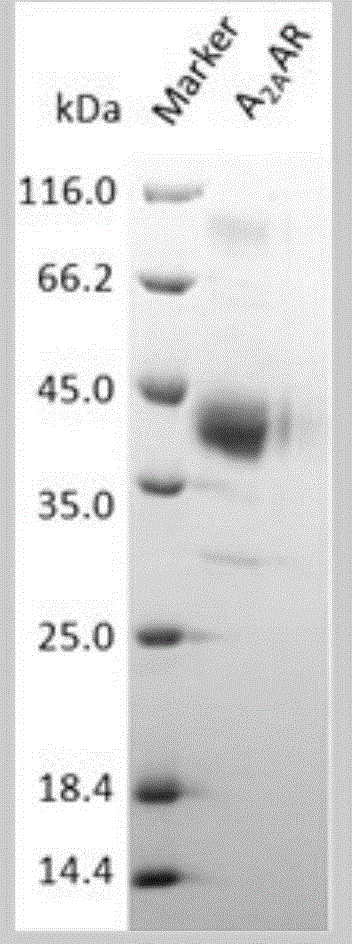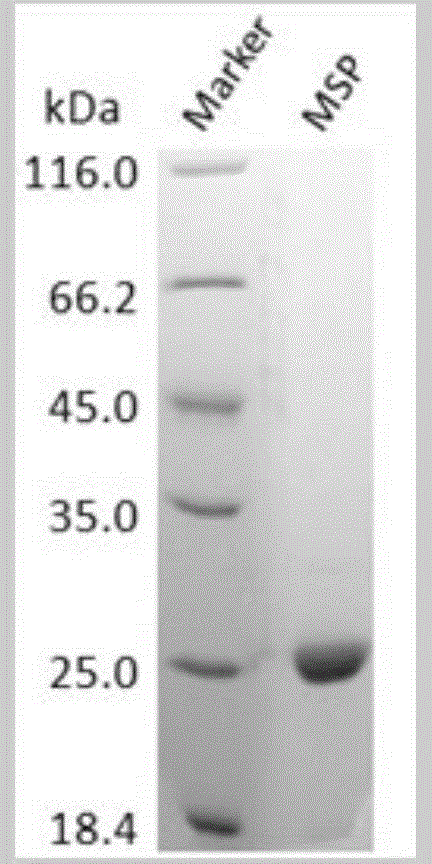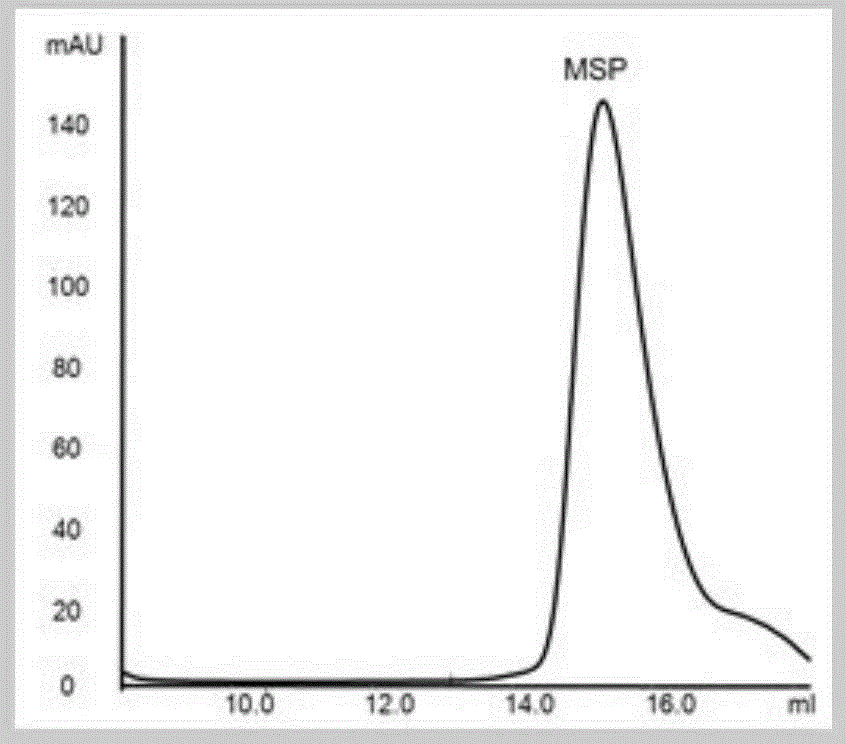Method for determining affinity of membrane protein and ligand based on liquid chromatography tandem mass spectrometry
A technology of liquid chromatography-mass spectrometry and determination method, which is applied in the field of biomedicine to achieve the effects of higher detection results, high throughput, and accurate and credible detection results.
- Summary
- Abstract
- Description
- Claims
- Application Information
AI Technical Summary
Problems solved by technology
Method used
Image
Examples
Embodiment 1A2A
[0033] Example 1A 2A Adenosine receptor expression and purification
[0034] A used in the present invention 2A The construction of the adenosine receptor protein expression plasmid was carried out in literature 3 (Chun, E. et al. Fusion partner toolchest for the stabilization and crystallization of G protein-coupled receptors. Structure20, 967-976, doi: 10.1016 / j.str.2012.04 .010(2012).), the constructed plasmid was expressed in SF9 insect cells (purchased from LifeTechnology, USA). Prepare P0, P1 and P2 generation viruses according to the instructions of SF9 cell expression protein provided by LifeTechnology Company, use the P2 generation virus to infect insect cell sf9 with a density of 2x10^6 / ml according to MOI=1~2, and continue to culture for 72 hours, The cells were collected by centrifugation and frozen at -80°C for later use.
[0035] Use 200ml of pre-cooled lysate (10mMHEPESpH7.5, 10mMMgCl2, 20mMKCl) to resuspend the cells per liter of cells, homogenize on ice wit...
Embodiment 2
[0036] Example 2 Membrane Scaffold Protein (Membrane Scaffold Protein, MSP) expression and purification
[0037] Membrane scaffold protein used in the present invention is adopted as reported by document 4 (Ritchie, T.K. etal. The membrane scaffold protein transformed from human apolipoprotein has a molecular weight of 24.6Kd. Condon plus strain is used as the host bacteria for the expression of the membrane scaffold protein, and the target gene is inserted into the expression vector by conventional molecular cloning technology. Transform Condon plus competent cells with 2ul of recombinant plasmids, select monoclonal strains, inoculate them into 5ml of culture medium and incubate at 37°C, inoculate overnight cultured bacteria into 2.5L of LB culture medium, cultivate at 37°C until the OD value reaches After 2.5 or so, 1 mM IPTG was added, and the expression was induced at 37°C for 3 hours. Bacteria were collected by centrifugation at 8500 g for 3 minutes, and the collected ba...
Embodiment 3
[0040] Embodiment 3 Nanodisc biofilm simulation system assembly
[0041] Choose a 2ml assembly system, take 110ul of palmitoyloleoylphosphatidylcholine (POPC) liquid pre-dissolved in chloroform at a concentration of 100mM, put it into a 4ml EP tube, and dry it slowly with nitrogen to make the chloroform completely evaporate. After the POPC is ready, add 400ml of 100mM sodium cholate (dissolved in 20mM Tris, 100mMNaCl, pH7.4 buffer A in advance) into the EP tube, and heat in a water bath at 60°C to promote dissolution. After the POPC is completely dissolved, place it on ice to cool, then add 1ml of the membrane scaffold protein (4mg / ml) prepared in Example 2, and add 600ml of buffer A (20mM Tris, 100mMNaCl, pH7.4) to make the total volume 2ml , assembled without A 2A The Nanodisc of the receptor protein was used as a blank control; for A 2A For the Nanodisc of adenosine protein, add the A prepared in Example 1 2A1mg of adenosine receptor protein was used instead of buffer A,...
PUM
| Property | Measurement | Unit |
|---|---|---|
| purity | aaaaa | aaaaa |
Abstract
Description
Claims
Application Information
 Login to View More
Login to View More - R&D
- Intellectual Property
- Life Sciences
- Materials
- Tech Scout
- Unparalleled Data Quality
- Higher Quality Content
- 60% Fewer Hallucinations
Browse by: Latest US Patents, China's latest patents, Technical Efficacy Thesaurus, Application Domain, Technology Topic, Popular Technical Reports.
© 2025 PatSnap. All rights reserved.Legal|Privacy policy|Modern Slavery Act Transparency Statement|Sitemap|About US| Contact US: help@patsnap.com



